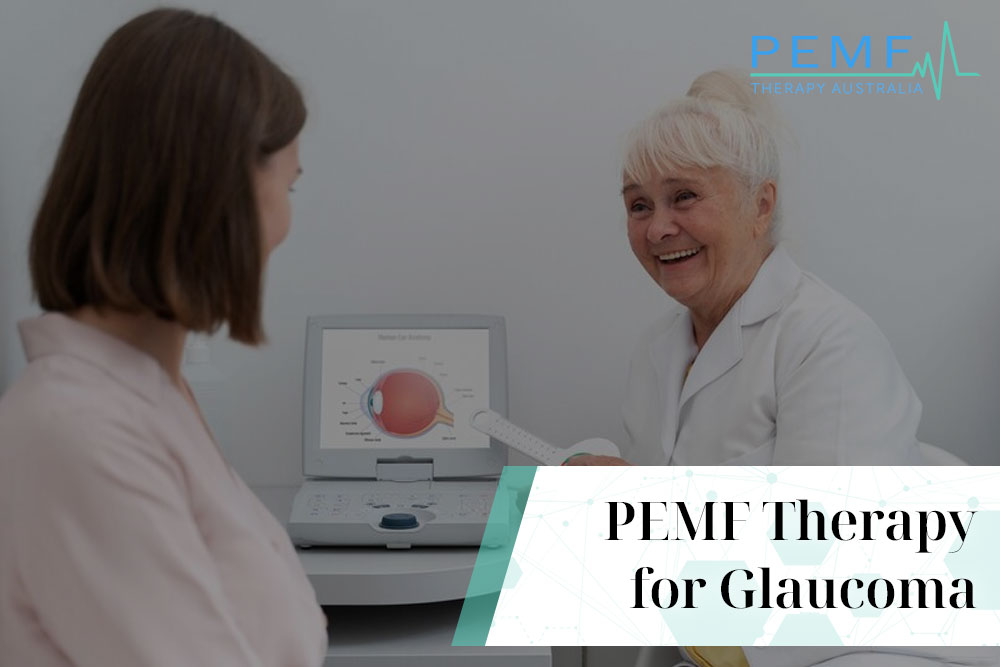Imagine a world without clear vision. For individuals with glaucoma, this is a reality they face daily. Glaucoma, often referred to as the “silent thief of sight,” is a progressive eye condition that can lead to blindness if left untreated.
While conventional treatments like eye drops and surgeries are common, there’s an emerging player in the field of alternative therapies that shows promise in managing glaucoma—PEMF therapy.
Understanding Glaucoma
Before delving into PEMF therapy, let’s grasp the gravity of glaucoma. It’s a group of eye diseases characterised by elevated intraocular pressure (IOP), which damages the optic nerve. If not managed, this damage can lead to irreversible vision loss. There are several types of glaucoma, including open-angle, angle-closure and normal-tension, each with its own set of challenges.
The causes of glaucoma can vary, but risk factors include age, family history and certain medical conditions. Glaucoma often develops slowly, with no noticeable symptoms until it’s in advanced stages. This makes regular eye check-ups crucial, especially for those at risk.
Current Glaucoma Treatments
Traditional glaucoma treatments aim to lower IOP to prevent further damage. These treatments include prescription eye drops, laser therapy and surgical procedures. While they can be effective in managing glaucoma, they also come with limitations.
Eye drops, for instance, may cause eye irritation and require strict adherence to a dosing schedule. Laser therapy can be painful, and surgery is invasive and carries risks. Moreover, some patients may experience side effects from these treatments.
What is PEMF Therapy?
Enter PEMF therapy—Pulsed Electromagnetic Field therapy. This innovative approach to healthcare involves using electromagnetic fields to improve cellular function. While it’s not a new concept (PEMF therapy has been used for decades in various medical fields), its application in ophthalmology is gaining attention, particularly in managing glaucoma.
PEMF therapy works by delivering electromagnetic pulses to the body, which stimulate cellular activity. These pulses are gentle, non-invasive and painless. The therapy is believed to enhance circulation, reduce inflammation and promote overall healing.
The Science Behind PEMF for Glaucoma
Research into the use of PEMF therapy for glaucoma is still in its early stages, but the preliminary findings are promising. Studies suggest that PEMF therapy may help improve blood circulation in the eyes and reduce IOP. It’s hypothesised that this therapy can assist in slowing the progression of glaucoma and preserving vision.
One of the key mechanisms at play is vasodilation—the widening of blood vessels. By improving blood flow to the optic nerve, PEMF therapy may offer a protective effect against glaucoma-related damage. Additionally, reducing inflammation within the eye can further support the management of this condition.
Benefits of PEMF Therapy
One of the significant advantages of PEMF therapy is its non-invasiveness. Patients undergoing PEMF therapy experience minimal discomfort, making it a viable option for those who may be averse to surgical procedures or invasive treatments.
Furthermore, PEMF therapy typically has minimal side effects, which is a welcome relief for individuals concerned about adverse reactions.
The potential benefits of PEMF therapy extend beyond managing IOP. It’s worth noting that PEMF therapy can complement traditional glaucoma treatments. This integrative approach allows patients to explore additional options while working closely with their ophthalmologists.
Personal Experiences
While scientific research is essential, it’s equally valuable to consider personal experiences. Some individuals with glaucoma have reported positive outcomes when incorporating PEMF therapy into their management routine. These experiences often involve improvements in visual clarity, reduced discomfort, and enhanced overall well-being.
It’s important to highlight that PEMF therapy isn’t a standalone cure for glaucoma. Instead, it can be a valuable adjunct to traditional treatments. Patients should always consult with their eye care specialists to determine the most suitable approach for their unique circumstances.
Using PEMF Devices
If you’re considering PEMF therapy for glaucoma, you’ll likely encounter various PEMF devices available for home use. These devices range from small, portable units to larger, more complex systems. It’s crucial to choose a device that suits your needs and follow the manufacturer’s instructions carefully.
When using a PEMF device at home, consistency is key. Regular sessions, as recommended by your healthcare provider, can help maximise the potential benefits of this therapy. Keep in mind that results may vary from person to person, and it’s essential to approach PEMF therapy with realistic expectations.
Consultation and Safety
Before embarking on PEMF therapy or making any changes to your glaucoma treatment plan, it’s vital to consult with your eye care specialist. They can provide valuable guidance based on your specific condition and medical history. Your eye doctor will help you navigate the world of PEMF therapy safely and effectively.
Final Thoughts
While PEMF therapy for glaucoma shows promise, it’s not a replacement for conventional treatments. Instead, it’s a complementary approach that may offer added benefits in managing this complex eye condition. Always prioritise regular eye check-ups, adhere to your prescribed treatments and discuss any alternative therapies with your healthcare provider.
By exploring the potential of PEMF therapy in tandem with traditional glaucoma management, you can take proactive steps toward preserving your vision and overall eye health.
Are you ready to incorporate PEMF therapy into your self-care routine? Look no further than PEMF Therapy Australia. Our experienced and certified practitioner is dedicated to helping you achieve your wellness goals through the power of PEMF therapy.
Contact us today to learn more at 0452 527 284 or leave an enquiry.


